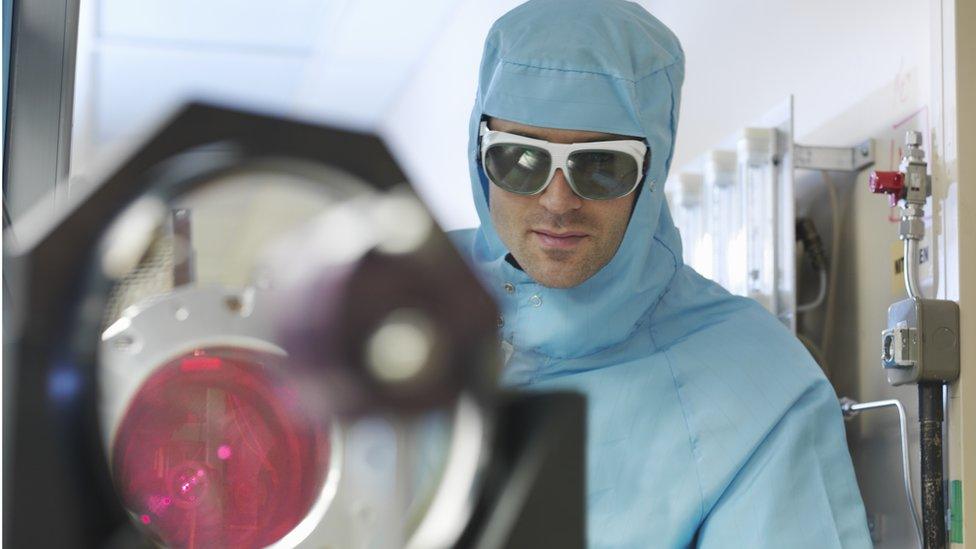Scientists shed new light on 'entangled' particles
- Published

A team of Scottish-based scientists has found the solution to a quantum fankle.
The researchers from Heriot-Watt and Glasgow universities have managed to transport "entangled" particles of light through a complex medium.
The result could be mean new advances in ultra-secure cryptography, quantum computing and communications.
Quantum entanglement means two particles are inextricably linked and replicate each other's every move - even if they are far apart.
If this doesn't make much sense, rest assured you are not alone. Even Albert Einstein described quantum entanglement as "spooky action at distance".
That's because we live in Isaac Newton's world of falling (and probably apocryphal) apples, where the effects of classical physics are comfortingly familiar.
Things at an atomic scale - and approaching the speed of light - behave quite differently and counterintuitively.
Thick fog
There are many potential uses of this entangled, quantum light but until now the way forward has been unclear, literally.
Entanglement usually gets lost when a light particle enters a complex medium - anything that scatters or "scrambles" the light.
That can be something as complex as a multi-mode optical fibre or as simple as thick fog.
What you got out, according to Dr Mehul Malik from Heriot-Watt's School of Engineering & Physical Sciences, was "gibberish".
Now he says the problem has been solved. Working with colleagues at Glasgow University, the team has reported its findings in the journal, Nature Physics.
Bafflement alert: they have relied on another mysterious feature of the quantum world - the entangled particles and the medium they travel through can be treated as one and the same thing.

Optical fibres can scramble light
Dr Malik says: "We've made use of a unique property in quantum physics that allows one to map the entire medium onto the quantum state travelling through it.
"In other words, the scrambled entangled state captures an 'image' of the complex medium, which tells us exactly how to reverse the scattering process inside it."
It means the problem has become the key to the solution.
And while your brain reels from that, there's more: the unscrambling can be done without touching either the particle of light or the complex medium it has travelled through.
Remember, it takes two to tangle: the scientists carefully scramble the other entangled light particle - the one that's remained outside. That allows them to regain the entanglement that was lost.
Imaging techniques
Co-author Dr Hugo Defienne, from Glasgow University's School of Physics and Astronomy, said the technique was "really exciting".
"It allows us to render the medium completely transparent to entanglement without ever having to manipulate the particles of light entering it," he said.
The authors say their results have immediate implications for quantum technologies, such as super-sensitive imaging techniques and the creation of a secure quantum internet.
If that comes to pass, we're likely to be more than happy to use the new technologies without fully grasping how they work.
Einstein was right about this stuff being spooky, though.